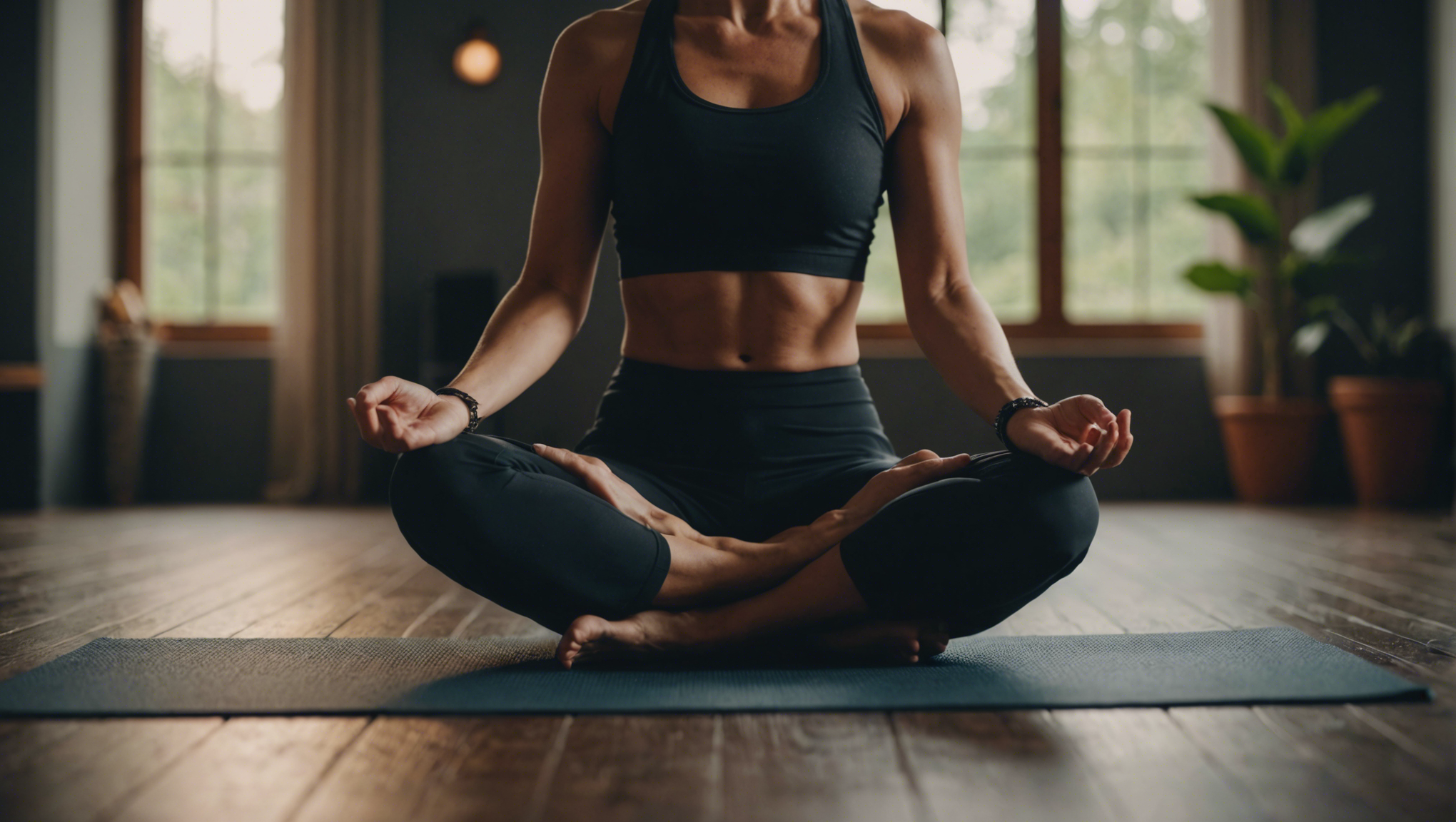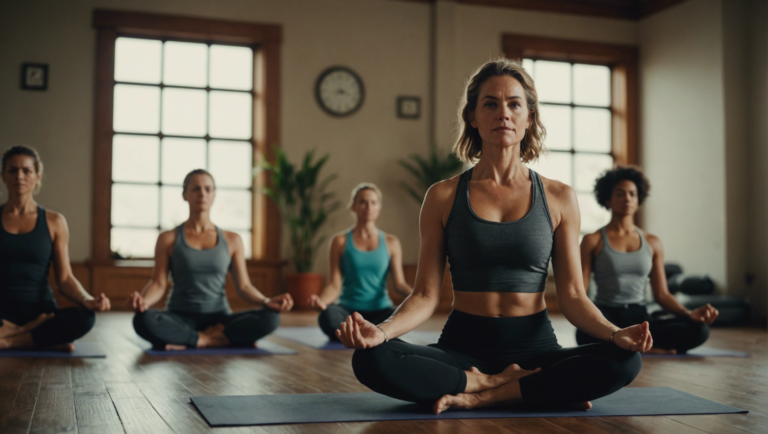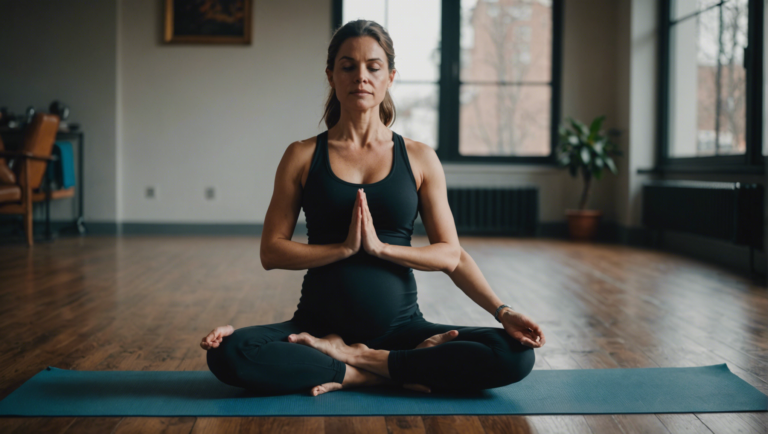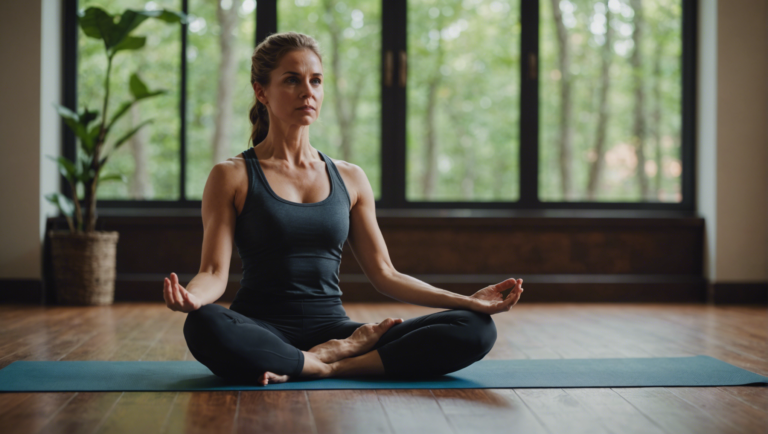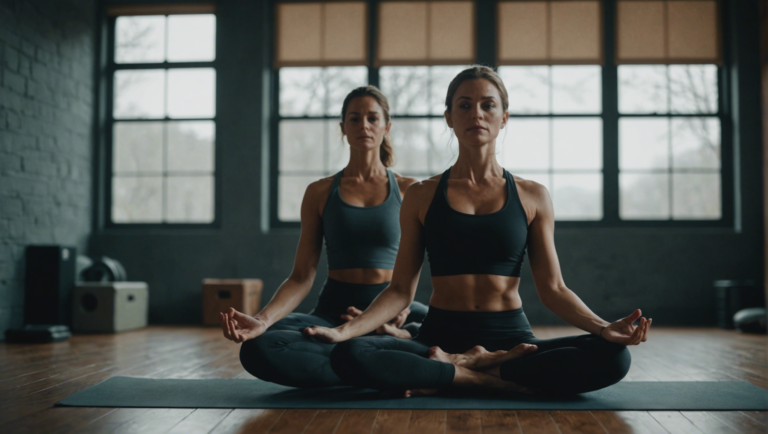Experience Liberation: Go Free With Yoga Practices
The Path to Inner Freedom Through Yoga Practices
Unlocking the Door to Inner Freedom with Yoga
Yoga transcends its physical practice, serving as a journey towards profound inner liberation. This ancient discipline, rooted in millennia of wisdom, offers a holistic approach to freeing the mind, body, and spirit from the chains of everyday stress, anxiety, and life’s burdens. At its core, yoga is less about achieving perfect poses and more about exploring the depths of one’s existence, finding peace, balance, and ultimately, a sense of freedom within.
The Foundation of Freedom: Breath and Movement
The symbiotic relationship between breath and movement in yoga acts as the first step towards inner freedom. Through controlled breathing techniques, such as Pranayama, individuals can regulate their body’s response to stress, calming the mind and setting the groundwork for a deeper spiritual connection. The rhythmic flow of asanas (poses) in synchronization with breath teaches presence and mindfulness, grounding practitioners in the moment and disconnecting them from the tumult of external concerns.
Harnessing the Power of Meditation and Mindfulness
At the heart of achieving liberation through yoga practices is the art of meditation and mindfulness. These practices encourage a state of focused attention and awareness, helping to clear the clutter of constant mental chatter that often leads to anxiety and stress. By fostering a non-judgmental relationship with one’s thoughts, yoga practitioners can detach from negative patterns, leading to a liberating sense of peace and equanimity. The integration of meditation into daily yoga practice strengthens the mind’s resilience against the pressures of daily life, paving a path to inner freedom.
The Role of Yoga Philosophy in Achieving Liberation
Yoga’s philosophical teachings offer valuable insights into the nature of suffering, ego, and attachment—factors that often imprison the human spirit. The exploration of ancient texts, such as the Yoga Sutras of Patanjali, provides a framework for understanding the causes of human distress and the pathways to transcend them. Through the study and implementation of yamas (ethical standards) and niyamas (self-disciplines), individuals can cultivate a lifestyle that supports liberation, fostering a sense of harmony with oneself, others, and the environment.
Building a Community of Support
The journey towards inner freedom is profoundly personal, yet it thrives in the company of like-minded individuals. The yoga community offers a space of acceptance and understanding, allowing practitioners to share experiences, challenges, and triumphs. This collective energy not only amplifies the individual’s effort towards liberation but also reinforces the understanding that the path to freedom is a shared human endeavor. Engaging with the yoga community, whether in physical spaces or online, can provide encouragement and inspiration, reminding practitioners that they are not alone in their quest for inner peace.
Personalizing Your Path to Liberation
The beauty of yoga lies in its adaptability to the individual’s needs and circumstances. There is no one-size-fits-all approach to achieving inner freedom through yoga practices. Some may find solace in the physicality of Ashtanga or Vinyasa practices, while others might connect more deeply through the stillness of Yin yoga or the contemplative nature of Kundalini yoga. Experimentation and open-mindedness are key, as each person’s journey is unique. Listening to one’s body and intuition can guide practitioners towards the practices that resonate most profoundly with their quest for freedom.
Achieving liberation through yoga is a transformative process, marked by moments of challenge, discovery, and profound peace. It is a path of letting go—of expectations, judgments, and preconceptions—allowing the individual to immerse fully in the present moment. Through dedicated practice, patience, and openness, yoga offers a key to unlocking the door to inner freedom, inviting practitioners to step into a space of boundless peace and joy that resides within.
Integrating Yoga into Daily Life for Mental Clarity and Emotional Balance
The quest for mental clarity and emotional balance is an enduring journey, one that intertwines with the core essence of our wellbeing. The modern era, characterized by rapid technological advancements and incessant demands on our time and attention, only amplifies the need for practices that ground us in the present and foster internal equilibrium. Yoga, a millennia-old discipline, offers a holistic approach to weaving tranquility and mindfulness into the fabric of our daily routines.
Embracing Daily Yoga for Enhanced Mental Clarity
Yoga, more than a physical exercise, is a comprehensive practice that integrates body, mind, and spirit, offering a roadmap to serenity and sharper mental focus. The ancient texts describe yoga as the cessation of the fluctuations of the mind, revealing its profound potential to clear mental clutter and foster a state of peaceful alertness. Engaging in daily yoga practices, even for just a few minutes, can significantly elevate cognitive functions, empowering individuals to navigate life’s complexities with greater ease and perspective.
The juxtaposition of movement and breath in yoga serves as a powerful tool to enhance concentration and mental stamina. Asanas, or yoga poses, bolster physical strength and flexibility while simultaneously steadying the mind and curtailing the tendrils of anxiety and stress. This symbiosis between body and mind is the cornerstone of achieving mental clarity, as it encourages a state of flow, where distractions dissipate, and one’s focus sharpens.
Cultivating Emotional Balance Through Yogic Practices
Balancing the emotional landscape is another pivotal benefit of integrating yoga into daily life. Emotional turbulence can significantly impact one’s quality of life, affecting relationships, productivity, and overall happiness. Yoga offers a sanctuary, a respite from the emotional storms, through practices that emphasize self-awareness and inner calm.
Pranayama, or yogic breathing techniques, are particularly effective in regulating the body’s stress response systems. By consciously modulating breath patterns, individuals can evoke a relaxation response, mitigating feelings of anxiety or agitation and fostering emotional resilience. This is not merely a temporary reprieve but a transformative practice that, over time, can recalibrate one’s emotional baseline towards equanimity and poise.
Meditation, another integral component of yoga, further deepens the emotional healing process. It gently guides practitioners to a state of introspection and mindfulness, enabling a deeper understanding and acceptance of one’s thoughts and feelings. This mindful awareness creates a space between one’s experiences and reactions, offering a choice—a moment of pause—to respond rather than react impulsively. Through regular meditation, individuals cultivate a stable and balanced emotional state, enhancing their capacity for empathy, patience, and compassion.
Implementing Yoga into Everyday Life
Adopting a yoga practice need not be daunting or time-consuming. The beauty of yoga lies in its flexibility and adaptability to individual needs and schedules. Starting with short, daily sessions can dramatically improve one’s mental and emotional landscape. Morning practices invigorate and set a positive tone for the day, while evening sessions can serve as a gentle unwinding ritual.
Moreover, yoga transcends the boundaries of the mat. The principles of mindfulness and deliberate action can permeate daily activities, turning mundane tasks into opportunities for presence and self-reflection. This seamless integration of yogic principles into daily life not only enriches the personal experience of the present moment but also fosters a broader sense of connection and purpose.
Final Thoughts
The journey towards mental clarity and emotional balance is a deeply personal and evolving one, reflecting the intricate tapestry of human experience. Yoga, with its rich heritage and holistic approach, offers a timeless and accessible path to nurturing the mind, body, and spirit. By weaving yoga into the fabric of daily life, individuals can unlock a wellspring of inner peace and resilience, navigating the currents of life with grace and equanimity.
The Transformational Power of Breath in Yoga
Discover the Transformational Power of Breath
In the ancient practice of yoga, breath work stands as the cornerstone, influencing the physical, emotional, and spiritual realms of those who engage with it. Understanding the profound impact of breath can enhance the yoga experience, leading to significant personal transformation and well-being.
The Science Behind Breath and Well-being
Renowned for its ability to center and calm the mind, the technique of controlling breath or ‘Pranayama’ goes beyond mere relaxation. Scientific studies have illuminated its ability to regulate the nervous system, decrease stress levels, and improve cognitive function. Controlled breathing practices have been linked to reduced symptoms of anxiety, depression, and insomnia, highlighting the breath’s power to alter our physiological and psychological states.
Breathing Techniques and Their Benefits
Each breathing technique in yoga serves a distinct purpose, from energizing the body to promoting relaxation. Techniques like Ujjayi (Ocean Breath) create a soothing sound that promotes a meditative state, while Kapalabhati (Skull Shining Breath) revitalizes the mind and cleanses the body of toxins. Surya Bhedana (Right Nostril Breathing) heats the body and stimulates the sympathetic nervous system, offering an invigorating start to the day.
Integrating Breath Work into Daily Life
Bringing the practice of mindful breathing into everyday life can transform mundane activities into moments of mindfulness. Whether preparing for a stressful event or seeking to find calm before sleep, employing specific breathing techniques can provide an immediate grounding effect. This integration promotes a continuous state of awareness and presence, significantly enhancing quality of life.
The Role of Breath in Physical Health
In yoga, breath is not only a tool for achieving a serene mind but also for enhancing physical health. Practices that emphasize breath control have been shown to improve respiratory function and increase lung capacity. This is particularly beneficial in today’s fast-paced world, where respiratory health has become a focal point of attention. By strengthening the connection between breath and movement, yoga practitioners can significantly boost their endurance and vitality.
Breath as a Path to Emotional Balance
On an emotional level, breath work serves as a powerful ally in managing emotions and fostering emotional resilience. Techniques that calm the nervous system can be particularly effective in times of emotional turmoil, providing a sanctuary of peace within. The regular practice of breath-focused yoga creates a stable foundation, enabling individuals to navigate life’s ups and downs with equanimity.
Uniting Breath with Meditation
The synergy of breath work and meditation creates a profound spiritual experience. Breath serves as an anchor during meditation, helping to maintain a focused and disciplined mind. As thoughts begin to dissolve in the rhythm of breath, a deeper sense of self-awareness and connection to the universe emerges. This union of breath and meditation invites a transformative journey towards enlightenment and self-discovery.
Embracing Breath as a Lifelong Companion
The journey with breath is a lifelong exploration, offering boundless opportunities for growth and transformation. As we deepen our understanding and practice of controlled breathing, we unlock the doors to heightened awareness, improved health, and a deeper sense of serenity. The breath becomes a trusted guide, leading us through the complexities of life with grace and resilience.
Breath in yoga is much more than a physical mechanism; it is a profound source of energy and renewal. By exploring and integrating the transformational power of breath, individuals can unlock their full potential, achieving a harmonious balance between body, mind, and spirit. This journey towards holistic well-being is both empowering and liberating, offering a path to true liberation and inner peace.
Yoga and Mindfulness: Partners in Achieving Personal Liberation
Embarking on a journey towards personal liberation can seem daunting, yet the ancient practices of yoga and mindfulness offer a compelling roadmap. These sister practices, rooted deeply in the pursuit of inner peace and liberation, have been guiding individuals towards self-realization for centuries. Their effectiveness lies in their ability to not only enhance physical well-being but also to foster a deep sense of mental clarity and emotional balance. This article explores how yoga and mindfulness can be seamlessly woven together to embark on a transformative journey toward personal freedom and well-being.
The Synergy of Yoga and Mindfulness
Yoga: A Physical Pathway to Liberation
Yoga, more than just a series of poses and stretches, is an all-encompassing practice that includes ethical precepts, breath control, and meditation, in addition to physical postures. It teaches the practitioner to listen to their body, recognize their limits, and gradually expand their boundaries. By focusing on the alignment of body, breath, and movement, yoga practitioners develop an increased awareness of the present moment—an essential aspect of mindfulness.
Mindfulness: The Mental Discipline
Mindfulness, often regarded as the heart of Buddhist meditation, is the practice of maintaining a non-judgmental state of heightened or complete awareness of one’s thoughts, emotions, or experiences on a moment-to-moment basis. It trains the mind to observe thoughts and feelings without attachment or aversion, thereby fostering a state of equanimity and serenity. When practiced in conjunction with yoga, mindfulness brings about a profound mental clarity that can illuminate the path to personal liberation.
Unleashing the Transformative Power of Breath
Breath: The Bridge Between Body and Mind
A key element that yogic practices and mindfulness share is an emphasis on the breath. Breathwork, or Pranayama in the yogic tradition, is a powerful tool for regulating the flow of energy (prana) throughout the body. It serves as a bridge, connecting the physical and mental dimensions of our being. Engaging in mindful breathing can calm the mind, reduce stress, and set the stage for deeper meditation practices. Through the disciplined practice of breath control, individuals can unlock the door to heightened states of consciousness and inner liberation.
Cultivating Presence Through Asana and Meditation
Asana: The Foundation of Mindful Movement
The physical poses of yoga, or asanas, are not merely exercises but are practiced with a mindful presence that draws the practitioner’s awareness to the subtleties of each movement and posture. This mindful engagement helps to dissolve distractions, allowing for a deeper connection with the present moment. As the body moves through various asanas, mindfulness enhances the experience, creating a moving meditation that nurtures both body and mind.
Meditation: The Path to Inner Stillness
Meditation, a core component of mindfulness practice, offers profound insights into the workings of the mind, revealing patterns of thought and behavior that may be obstructing personal liberation. Through regular meditation, practitioners learn to witness their mental processes with detachment, creating space for transformation and growth. This practice encourages a state of inner stillness and clarity, setting the foundation for true liberation.
The Journey to Personal Liberation
Transforming Challenges into Opportunities for Growth
The path of yoga and mindfulness is not devoid of challenges. However, each obstacle presents a unique opportunity for growth. Whether it’s mastering a complex yoga pose or sitting in meditation through waves of discomfort, these practices teach resilience, patience, and surrender. Over time, this journey fosters a profound sense of freedom, as practitioners learn to release attachments and aversions that bind the spirit.
A Lifelong Practice for Well-Being
Yoga and mindfulness offer more than just temporary relief from the stresses of modern life; they provide a framework for a lifelong journey of exploration and self-discovery. By committing to these practices, individuals can experience a profound transformation, characterized by a sense of peace, joy, and liberation that permeates every aspect of their being.
Embarking on this journey requires no special prerequisites, only an open heart and a willingness to dive deep into the realms of the self. By embracing yoga and mindfulness, anyone can set forth on a transformative path toward personal liberation, discovering along the way a sense of purpose and fulfillment that transcends the physical bounds of existence.
Overcoming Physical and Mental Barriers with Yoga
The ancient practice of yoga, with its deep roots in the mystical lands of India, extends far more than just being a series of stretches and poses. It is a comprehensive journey towards physical and mental wellness, breaking down the barriers that hold us back from achieving our full potential. In today’s fast-paced world, where stress and physical ailments have become commonplace, yoga emerges not merely as an exercise but as a liberation tool.
The Power of Yoga in Enhancing Physical Health
Yoga’s effectiveness in improving physical health is undisputed. It is not just an activity for the flexible; it is a path to achieving flexibility, strength, and improved health for everyone. By emphasizing asanas (poses) that target various parts of the body, yoga serves as a holistic workout that transcends the capabilities of many conventional exercises.
One significant advantage of yoga is its ability to alleviate chronic pain. Conditions such as arthritis, back pain, and fibromyalgia, which often linger despite medical treatment, can see marked improvement through regular yoga practice. This improvement is attributed to yoga’s gentle stretching, which enhances blood flow and promotes healing.
Moreover, yoga is a boon for cardiovascular health. Specific poses and breathing techniques are known to lower blood pressure, reduce cholesterol levels, and improve oxygen flow throughout the body, thereby reducing the risk of heart diseases.
The Role of Yoga in Mental and Emotional Well-being
Perhaps more profound is yoga’s impact on mental health. In a world where mental health issues are increasingly prevalent, yoga offers a sanctuary of peace and calm. The emphasis on mindfulness and deep breathing in yoga practices helps in significantly reducing stress and anxiety levels. This reduction is not just subjective; numerous studies have illustrated how yoga regulates the body’s stress response systems, lowering cortisol levels, the stress hormone, and promoting a sense of well-being.
Yoga also deepens the mind-body connection, fostering a sense of self-awareness that is often lost in the shuffle of daily life. Through regular practice, individuals learn to listen to their bodies, recognize stress signals, and apply yoga’s calming techniques beyond the mat, into their daily lives. This heightened self-awareness is a powerful tool in managing emotional stress and fostering a balanced mental state.
Combating Modern-Day Maladies with Yoga
In the context of modern-day maladies such as digital addiction, sleep disorders, and an overall sedentary lifestyle, yoga offers a counterbalance. Practices like Yoga Nidra have been shown to improve sleep quality, while screen detox through yoga retreats and camps encourages a healthier lifestyle away from digital devices.
Pranayama, or yogic breathing exercises, are particularly effective in enhancing focus and concentration, offering a natural alternative to combat the distractions of the digital age. These breathing techniques oxygenate the brain, improving cognitive function and reducing symptoms of ADHD in both adults and children.
Beyond Physical Postures: Yoga as a Way of Life
To view yoga merely as a series of physical exercises is to miss its essence. Yoga is a philosophy, a way of living that extends beyond the mat. It teaches patience, discipline, and mindfulness, virtues that are increasingly vital in today’s world. The practice of yoga is also deeply personal; it allows individuals to explore their physical and mental limits, gradually pushing these boundaries at their own pace.
Embracing Yoga for a Healthier Tomorrow
Whether you are battling a physical ailment, struggling with stress, or simply looking for a healthier lifestyle, yoga offers a comprehensive solution. It encourages balance, harmony, and a sense of inner peace that is both healing and liberating. As we embrace yoga in our daily lives, we not only overcome physical and mental barriers but also embark on a transformative journey towards a healthier, more fulfilled self.
Conclusion
Embarking on the journey of yoga is not simply engaging in a series of physical poses; it is a profoundly transformative voyage towards ultimate liberation. The essence captured through the exploration of yoga practices is a testimony to the boundless capacity for self-discovery, healing, and transcendence. This ancient discipline offers more than physical flexibility and strength; it is a gateway to unearthing a deep-seated sense of inner freedom. At the core of this philosophy lies the potential for every individual to navigate the complexities of life with grace, resilience, and unwavering peace.
The global embrace of yoga signifies a collective yearning for balance and harmony within the frenetic pace of modern existence. Integrating yoga into daily life emerges not as a mere addition to routine but as a necessary foundation for mental clarity and emotional equilibrium. The practices extend beyond the mat, infiltrating every moment with mindfulness and intention. The profound shift towards internal quietude and simplified existence is a testament to yoga’s efficacy in sculpting a life of contentment and purpose.
Moreover, the transformative power of breath within the yoga practice cannot be overstated. Breath, the most fundamental yet overlooked aspect of life, becomes a potent tool for self-regulation and transformation under the guidance of yoga. Through pranayama or breath control, individuals are empowered to navigate internal tumults, release pent-up emotions, and harness the capacity for profound inner change. This intimate connection with the breath fosters a sanctuary of calmness amidst life’s storms, offering a tangible sense of liberation that begins within.
Yoga and mindfulness, intricately interwoven, create a formidable partnership in the quest for personal liberation. Mindfulness, the art of being fully present, magnifies the benefits of yoga by deepening the practitioner’s connection to themselves and the world around them. This harmonious blend paves the way for a heightened state of awareness where thoughts and actions are in alignment with one’s deepest values and truths. The journey through yoga cultivates a mindful existence where each decision, thought, and action stems from a place of conscious choice rather than habit or reaction.
Facing and overcoming physical and mental barriers is a pivotal aspect of the yogic path. The challenges encountered on the mat mirror the obstacles faced in everyday life, serving as a microcosm for personal growth and resilience. Through consistent practice, individuals learn to confront their limitations, whether physical, mental, or emotional, with patience and determination. The breakthroughs experienced in overcoming these barriers translate into a profound sense of strength and confidence that permeates all facets of life. Yoga, in essence, becomes a tool for not only navigating but also dismantling the walls that confine our potential for freedom.
The tapestry woven through the shared exploration of yoga’s vast landscape depicts a rich, multifaceted journey towards liberation. With each posture, each breath, and each moment of mindful presence, individuals are invited to shed layers of constriction, revealing the boundless freedom that resides within. This journey is not marked by a final destination but by the continuous unraveling and discovery of the self. Yoga, in its deepest essence, offers a sacred pathway to liberation—a liberation that is not contingent upon external circumstances but a state of being that flourishes from within.
As we stand at the confluence of ancient wisdom and contemporary application, yoga offers a beacon of hope and transformation. It beckons each individual to embark on this journey of self-discovery, to embrace the challenges and triumphs along the path, and to unfold into the fullest expression of freedom. The liberation attained through yoga is not a fleeting sensation but a lasting state of being, offering solace, strength, and sanctuary in the ever-changing landscape of human existence. With each breath, each movement, and each moment of stillness, we are reminded of our inherent capacity for liberation, teaching us to navigate the dance of life with poise, grace, and an unshakeable sense of inner freedom.
